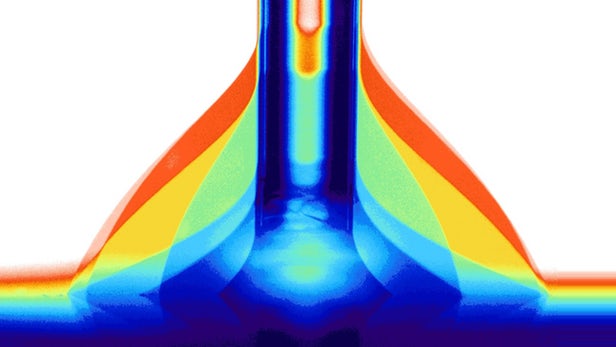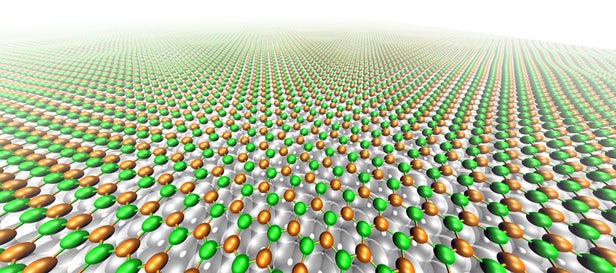Generally, water repellent objects and those that attract or absorb water have very different microscopic-level attributes that endow them with their behavior. For example, the myriad tiny hairs on a gecko’s body help it to efficiently repel water, whilst specially treated cotton designed for harvesting water from the air contains millions of tiny pores that draw in liquid. Now researchers have discovered a way to use a single type of material to perform both functions, switching between liquid attraction and liquid repulsion, simply through the application of an electric voltage.
Developed by a team of scientists from TU Wien, the University of Zurich, and KU Levin, the new material alters its water-handling behavior by changing its surface structure at the nanoscale to effect a change at the macroscale. Specifically, the behavior of liquid on the new material is as a result of altering the “stiction” (static friction) of the molecular surface. One with a high-level of stiction keeps moisture clinging to it, whilst one with a low-level allows the liquid to run right off.
To change the amount of stiction, a nanoscale mesh made of a single layer of boron nitride (or “white graphene”, as it is sometimes known) was grown on a bed of rhodium, to create a honeycomb structure with comb depths of around 0.1 nanometers and comb to comb distance of 3.2 nm. When a voltage is applied to the structure, the mesh flattens out, changing the contact angle between the water droplets and the molecules so greatly that surface tension can no longer be maintained, and the droplets lose their grip on the surface.
This is achieved when the applied electric current causes hydrogen to accumulate between the boron nitride and the rhodium layer, which evens out the surface distribution of molecules and makes the nanomesh structure flatten out. To observe this process, the researchers used a tunneling electron microscope to differentiate the shape of the honeycomb mesh with and without the voltage applied, and directly in contact with liquid.
“To understand and control the interplay between the macro and the nano-world is the real challenge in nanoscience,” said Professor Urs Greber from the University of Zurich. “Our model system of the electrically switchable nanomesh and a drop’s observable contact angle enables us to access the fundamental phenomenon of the friction of liquids on surfaces more precisely. This should help us solve problems that crop up during lubrication more effectively, for instance.”
The researchers see uses for this type of electrically-controlled behavior in biology, where this effect could enable control and handling of cells at the microscopic level, which may be useful in creating new and complex artificial multi-cellular arrangements that could help bolster scientific research. They also see the effect as the basis for technologies to create micro-capillary pumps, where the pressure and flow are controlled simply by the application of electricity along the length of a nanoscale tube.
The results of this research were recently published in the journal Nature.
Source: http://newatlas.com/
Dear User/Visitor! Please, answer on our questions: tick off one of the positions – your answer will make us able to improve our site and make it more interesting and useful!



